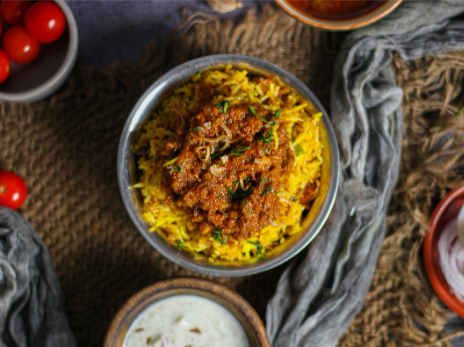
Evirocor eliminates plastic containers by serving curry in sustainable packaging
The ‘curry’ roots
In a nutshell, Indians adore curries. Without it, a traditional Indian meal is incomplete. Curry evolved in the Indian subcontinent, and the word derives from the Tamil word “kari,” which means gravy or stew to be eaten with rice. It is made up of a variety of spices, the most common of which are ginger-garlic paste, coriander, turmeric, cumin, and red chilies.
Curry then moved from India to Burma, Thailand, and China by Buddhist monks, who then conveyed it to countries such as Indonesia and the Philippines. With the establishment of the Mughal Empire in the early 16th century came a strong Turkish and Persian influence on Indian cooking. The curry recipe was brought to the Caribbean in the nineteenth century by Indian workers in the British sugar industry.
There is a significant difference between how curries are prepared and consumed in North India, and how curries are prepared and served in South India. While masalas (seasoning powder), garlic, ginger, onions, tomatoes, desi ghee (clarified butter), butter, and cream dominate curries in North India, curries in the South are flavoured with cloves, cumin, turmeric, curry leaves, and coconut milk. Goan curries (from Goa, India), known for their distinctive tang, use a lot of vinegar, and wine as seasoning agents. North Indian curries are also served with unleavened bread such as roti, naan, or paratha, whereas South Indian curries are served with boiled rice.

The problem with the ‘plastic’ curry
Ironically, the more we love curry, the more difficult it is to transport curries without risk of leakage. Indian curries are typically served to customers in plastic takeaway packaging from restaurants. This is not only unhealthy because plastic can leach out in the form of microplastics from containers into the food, but there is also a significant risk of curry leaking out because the container lid expands due to heat. Furthermore, plastics are more than just repulsive litter; they are made with many toxic components and accumulate a slew of other harmful toxins over the course of their immortal life. In essence, curry in plastic containers may not be a good option due to the potential health risks.
Evirocor’s eco-friendly wet & dry food containers
Evirocor’s Oko wet & dry food containers eliminate the need for plastic forever. Not only do they retain heat, but they are also freezable, microwaveable, greaseproof, and made of recyclable material. They have a waterproof eco barrier, leakproof lid in a variety of sizes. They’re ideal for packaging curries, noodles, rice, gravies, and liquids.

Oko sustainable packaging a game changer?
Oko’s sustainable packaging is perfect for many occasions, whether travelling on crowded trains, going on a picnic with friends, or eating langar at a Gurudwara, one can bring his favourite curry without fear of spillover. Oko packaging is made of unbleached paper and replaces plastic and aluminium food containers.
A tiny steps towards protecting the environment
Sustainable packaging is a perfect solution no matter how we unwrap it. To begin with, eco- friendly packaging benefits the company by bringing down material costs, and gaining a evpositive community response as an environmentally conscious company.
Moreover, knowing that they are reducing their carbon footprint gives the consumer a sense of accomplishment. But the true ultimate winner here will undoubtedly be our planet Earth!
